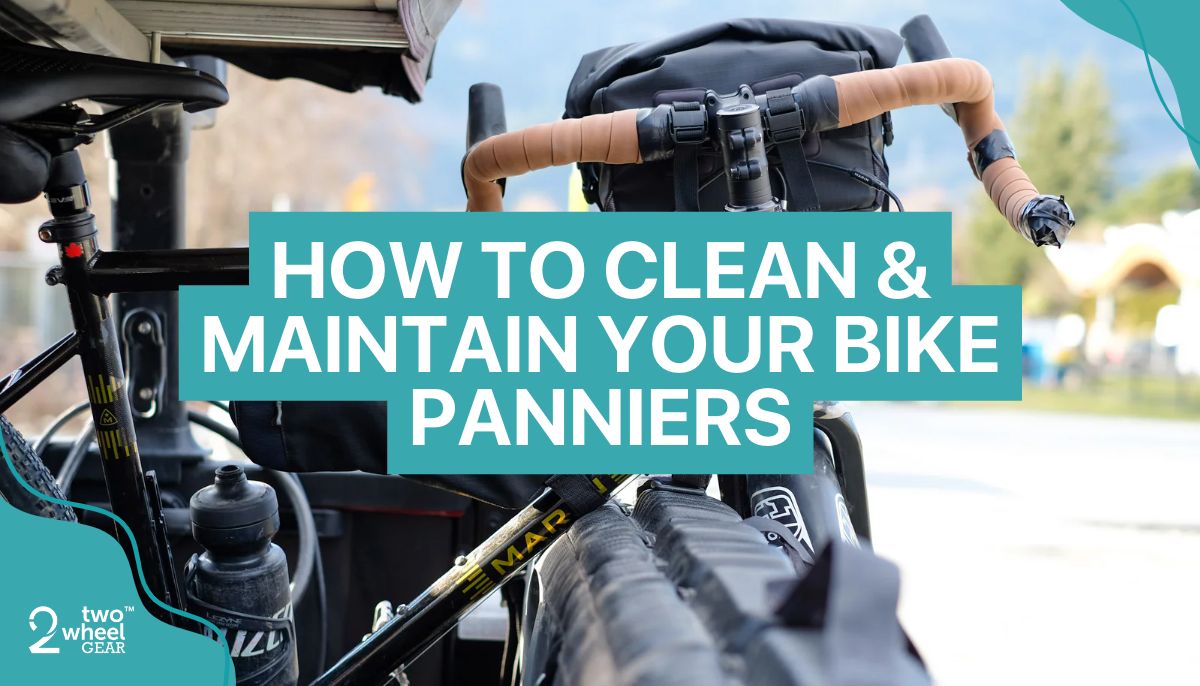
How To Clean & Maintain Bike Panniers
|
|
Lesezeit 7 min
|
|
Lesezeit 7 min
Maintaining a bike pannier includes cleaning and organizing it, along with ensuring its security. Additionally, you have to clean and maintain the items that are are in direct contact with a bike pannier. We've covered it all in this guide to help you maintain bike panniers easily.
With these tips and tricks, you won't have to worry about a smelly pannier or rusty racks. We'll also tell you how to organize things in your panniers. With our final five tips, you'll save a lot of money and keep your panniers safe for longer.
There are four important things you need to do to maintain any type of bike pannier.
Here's a quick breakdown of all four things you should think about when you're maintaining your pannier.
You can also take some extra steps to keep your panniers safe during the rides. For example, things like a rain cover and wet sack keep moisture away.
Here's a quick 7 step guide to cleaning bike panniers:
If the bag has a persistent odor, place it in cardboard box and place an odor control tablet in the corner of the box. Close the covers on the box and wait for a few hours. Do not spray deodorant or perfume direct onto the pannier because it can ruin the waterproof coating.
In our bid to quickly clean things up, we often make unwise decisions that harm us more.
Here are 5 things that you should never do when cleaning a bike pannier:
For extra caution, always check the washing conditions for your pannier. The methods above will work for most 2WG and other waterproof panniers.
However, it isn't a universal cure-all because some manufacturers like Ortlieb and Arkel use different fabrics for their bicycle panniers.
The best way to keep panniers safe is by organizing the items inside properly.
Here's how you organize a pannier the right way.
For extra organization always use a frame bag or handle bar bag. These are great for keeping all your urgent-need items away from things that you don't need during the ride. It makes your commute much easier because you don't have to waste time searching for things.
Leaving your pannier unprotected could attract the attention of unwanted opportunists, especially on tours and trips. You should take steps to keep your pannier safe during and after the ride. For starters, always use a convertible pannier that you can easily remove and carry around after a ride.
You can try the 2WG Convertible Backpack LITE, which easily transforms into a backpack. Most people are tired and attaching and removing their panniers. You can make the process much easier with Tack Straps and the KLICKFix Mounting Set.
These two make the pannier effortless to remove. If you want to keep the pannier on the bike, try using cable locks to attach the pannier to the cycle. For extra measure, park the bike inside a designated and safe area, where a random stranger can't steal it.
While this may seem a bit too extreme, some people prefer attaching the pannier permanently to their bike. They do this by drilling two holes into the pannier and using U-Bolts to screw them to the bike. It's a crude but very efficient way of keeping your pannier attached to your bike.
While this works, remember your panniers are still accessible and anyone can open them to take out your stuff. Some cyclists prefer using Wire Folding Baskets. It means you don't have to hook or unhook the bags, which makes them much easier to move around.
The most convenient solution to this very day is using a convertible pannier bag that is easy to remove. Take your bike everywhere and anywhere, but always lock the bike when you're leaving it for extended periods. And here's a piece of advice that I personally always recommend following.
Racks are always in contact with your pannier and naturally the grime from them transfers onto the pannier. Keeping your pannier rack clean will save you a lot of effort and stains.
Here's how you clean a pannier rack:
Yes, cleaning a rack is very easy and doesn't take more than 5 minutes. You can easily clean it while you're washing the bike. The process only becomes difficult when the rack has rust.
One of the easiest cures for rust is White Vinegar. Take white vinegar, dab it on a clothe or pad and apply it to the affected area. Remove the white vinegar with a wet cloth, and dry the rack with another cloth.
Remember, this method will only work for racks that have a small amount of rust. For racks with more rust, you'll have to take more extreme measures like industrial rust remover. Furthermore, you should consider repainting and coating your racks to keep rust away.
You can also use aluminium alloy rear racks, which are more rust-resistant compared to standard racks. If you're looking for a recommendation try Priority Rear Bike Rack. It's completely plated for rust, grime, and dust resistance.
Here are 5 things that will make your life much easier when you're riding around with a pannier:
With these tips, you can ensure the longevity of your pannier and make your ride more convenient. For more valuable advice keep an eye on our blog or join a bike forum. It's a great way to get advice from like-minded riders who want nothing more than a smooth ride with a clean pannier.


